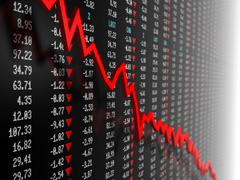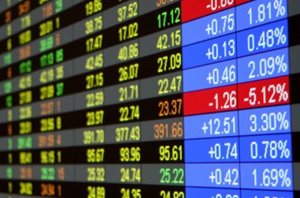 By the close of trading on Wednesday, May 4th, the silver market had experienced significant selling pressure that drove prices down by 17.3% from Thursday, April 28th. This sell off corresponded exactly to a series of increased margin requirements by the COMEX for trading silver futures contracts.
By the close of trading on Wednesday, May 4th, the silver market had experienced significant selling pressure that drove prices down by 17.3% from Thursday, April 28th. This sell off corresponded exactly to a series of increased margin requirements by the COMEX for trading silver futures contracts.
Silver traders who may have been apprehensive about additional margin increases did not have long to wait. After the close on Wednesday, May 4th, the COMEX announced two huge additional hikes in silver margin, effective at the close of business on Thursday and another hike effective at the close of trading on Monday, May 9th. As of Monday, initial contract margin requirements would be increased to $21,600 and to $16,000 for hedgers. A year ago, when silver was trading in the $18 range, the margin requirement for a speculative contract was only $4,250.
The rapid series of five margin increases by the COMEX resulted in raising initial margin requirements for speculators from $11,745 to $21,600 – an increase of 84%. The margin requirements for hedgers also increased by 84% from $8,700 to $16,000. Silver futures traders would now be forced to come up with huge amounts of additional cash or liquidate holdings on price weakness. The collapse in silver prices on Thursday May 5th, triggered by the COMEX margin increases, indicates that many players were forced to liquidate positions.
The actions taken by the COMEX constitute a perfect text book example on how to crash a market. The non stop increases in margin requirements resulted in a dramatic reduction of liquidity in the silver market by forcing out small speculators who were not prepared to commit additional cash for margin maintenance. As prices fell in response to the COMEX margin increases, bigger players in the silver market were forced to liquidate positions to avoid margin calls and large losses on leveraged positions.
The last two margin increases by the COMEX, after silver had already declined by over 17%, created the perfect crash scenario. Silver traders liquidating positions to meet new margin requirements caused a further cascade of forced selling and the silver crash became inevitable. The elimination of liquidity from any market will result in falling prices and the COMEX knew this.
If someone wanted to crash the silver market, the moves taken by the COMEX were perfectly designed to accomplish this by reducing liquidity at a time during which the markets were already stressed from previous margin increases. The result was a collapse in silver prices from $48.70 to the $34 range.
In response to the outrage over the devastating series of margin requirement increases, Kim Taylor, President of CME Clearing, which owns the COMEX, issued a statement explaining CME’s actions. According to Ms. Taylor, margin increases are related to risk management and done to prevent default by clearing member firms. Margins are adjusted based on market volatility and are not designed to move a market or discourage investor participation. Among the factors considered in setting margins is a CME calculation of a worst case scenario for possible portfolio losses.
Specifically regarding the margin increases on silver futures, Taylor stated that “we have made several changes in recent weeks to adjust to volatility in the marketplace…Our interest is in providing security for the entire market – no matter which way it moves”.
CME’s statement seems disingenuous at best. The protection they speak of is not for the benefit of investors, but rather for the benefit of CME and clearing house members. The actions of the COMEX in implementing a rapid series of margin increases, even after silver had already steeply sold off, resulted in large profits to short sellers and reduced risk for CME at the expense of huge losses for silver investors both large and small.
A slower series of margin increases would have seemed more appropriate to address price volatility. The CME knew or should have known that its actions would severely limit liquidity in the silver market. The decrease in liquidity caused further market volatility, requiring more margin increases, which in turn crashed the price of silver. Anyone looking into the great silver crash of 2011, can start by looking at the COMEX.
 JP Morgan has
JP Morgan has  Another Precious Week
Another Precious Week